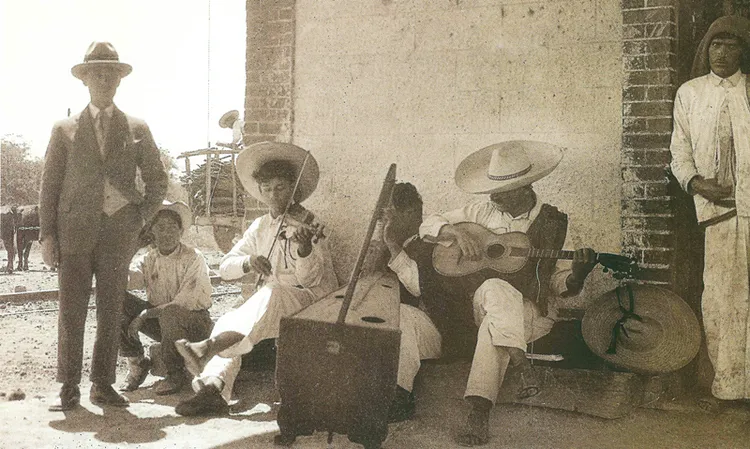
The History and Evolution of Mariachi: Mexico’s Iconic Music Tradition
"Mariachi is not just music; it is the voice of Mexico’s history, a bridge between past and present, carrying the spirit of tradition through every note." - Paul Lomeli
The Rich History and Origins of Mariachi Music

The Origins of Mariachi Music
While no one knows the exact origins of mariachi, historians agree that this genre has been passed down orally through multiple generations. The birthplace of mariachi is traditionally associated with Jalisco, Mexico, but its influence extends to neighboring states like Michoacán, Colima, Nayarit, and Zacatecas. These regions contributed to different styles of mariachi music, many of which are nearly extinct today. Despite its unclear beginnings, mariachi continues to be an evolving tradition deeply embedded in Mexican culture.
The Meaning Behind the Word "Mariachi"
The word "mariachi" itself has been the subject of debate among historians. A widely spread myth suggests that the term comes from the French word "miriage" (meaning marriage), but this theory has been debunked. The earliest recorded mention of the term was found in a letter from Father Cosme Santa Ana, written in 1848—long before the French occupation of Mexico. Many researchers now believe that the word has indigenous roots, though its exact meaning remains uncertain.
The Evolution of Mariachi Attire

During the Porfirio Díaz era, mariachi musicians transitioned from wearing straw hats, cloth outfits, and huaraches (traditional Mexican sandals) to the more formal "traje de charro" (mariachi suit) that we see today. This transformation helped mariachi gain recognition as a national symbol, solidifying its place in Mexican identity and culture. The elaborate embroidery, wide-brimmed sombreros, and fitted jackets of the traje de charro reflect the elegance and pride that mariachi musicians carry with them.

The First Mariachi Recording and Radio Appearance
The earliest documented mariachi group in Mexico City dates back to 1905 with Justo Villa’s "Cuarteto Coculense". This group recorded the first-ever mariachi music in 1906, capturing the essence of the genre for future generations. By 1925, Concho Andrade's mariachi performed on the first-ever Mexican radio broadcast, while Cirilo Marmolejo made the first mariachi recordings using electric sound systems, allowing the music to reach a broader audience and further solidify its place in Mexican popular culture.

Mariachi de Concho Andrade

Cirilo Marmolejo
Plaza Garibaldi: The Heart of Mariachi
Towards the late 1920s, mariachi legends Concho Andrade and Cirilo Marmolejo played in "El Tenampa," a famous cantina in Mexico City’s Plaza Garibaldi. This marked the beginning of Plaza Garibaldi as the home of mariachi music, a tradition that continues to this day. Today, Plaza Garibaldi remains a cultural hub where musicians gather to perform, keeping the spirit of mariachi alive for locals and tourists alike.

El Tenampa

Plaza Garibaldi
The Influence of Mariachi in Modern Music
Mariachi has continued to evolve over the decades, influencing various music genres like ranchera, norteño, and even contemporary pop. Artists such as Vicente Fernández, Juan Gabriel, and Luis Miguel have incorporated mariachi into their music, bringing the genre to international audiences. Today, mariachi bands perform at festivals, weddings, and national celebrations, keeping the tradition alive across Mexico and the world.
One of the most influential figures in modern mariachi is José Hernández, the founder of Mariachi Sol de México. Hernández has revolutionized mariachi music by blending traditional elements with innovative arrangements, expanding its reach beyond Mexico. Through his work as a composer, arranger, and educator, he has elevated mariachi to new heights, introducing it to symphonic settings and global audiences. His commitment to preserving mariachi’s authenticity while adapting it to contemporary music has helped bridge generational gaps, ensuring that mariachi remains a vibrant and evolving art form.

Jose Hernandez
Why Mariachi is Important to Mexican Culture
Mariachi is more than just music—it is a living representation of Mexican history, pride, and identity. From Jalisco’s small towns to international stages, mariachi remains a powerful symbol of Mexico’s rich cultural heritage. Whether you hear it performed at a fiesta or in a formal concert setting, the emotional depth and passion of mariachi music make it an unforgettable experience. Its storytelling nature, vibrant instrumentation, and deep-rooted traditions continue to resonate with people of all generations.